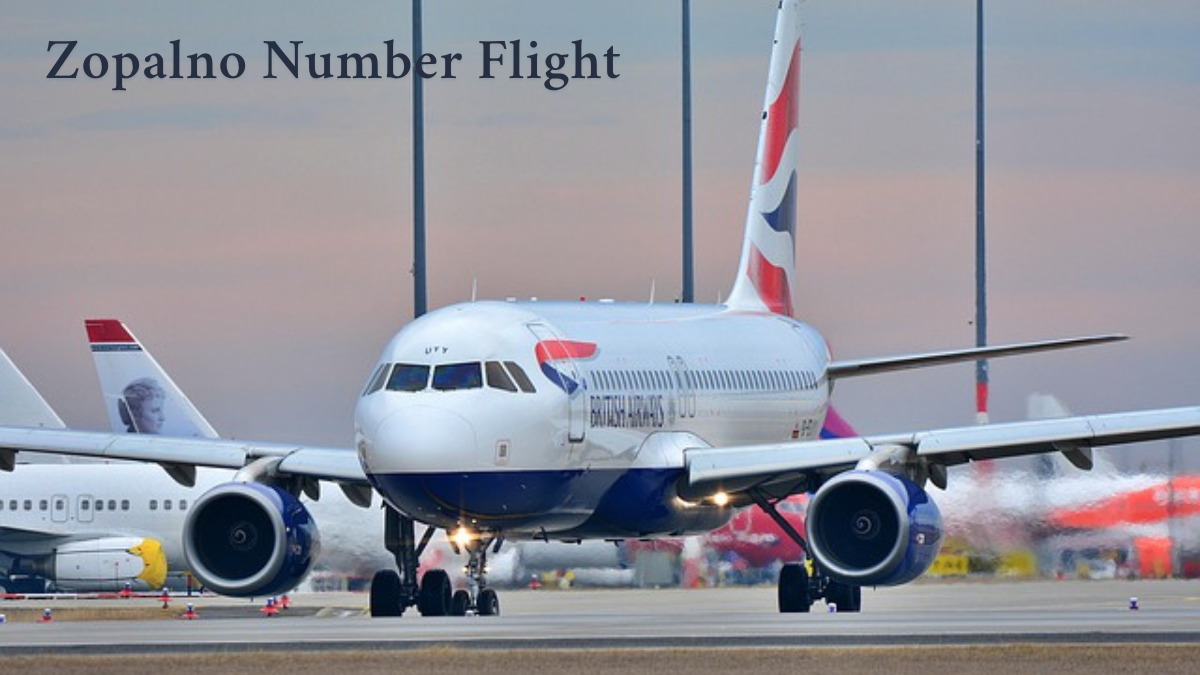In the rapidly changing fields of technology and aviation, new terms and systems are being created all the time to increase productivity and better user experiences. An interesting example of this is the “Zopalno Number Flight.” Although it is not a widely used phrase, it refers to a certain aviation system or operational approach. In order to enhance scheduling, navigation, and passenger convenience, the concept centers on optimizing flight operations through numerical and algorithmic precision.
The Origin of Zopalno Number Flight
The term “Zopalno Number Flight” likely emerges from advancements in aviation technology and data systems. Modern aviation relies heavily on numerical computations and algorithms for flight management systems, air traffic control, and logistical planning. “Zopalno” could signify a specific software, methodology, or operational approach designed to streamline these processes. With the increased adoption of digital transformation in aviation, the concept of Zopalno Number Flight becomes relevant in addressing the complexities of modern air travel.
Key Features of Zopalno Number Flight
Enhanced Navigation Systems
The Zopalno Number Flight concept is rooted in precision navigation. By leveraging advanced numerical computations and real-time data analytics, flights can be better guided through congested airspaces, minimizing delays and optimizing fuel consumption. This approach ensures that routes are more efficient and safer for both passengers and crew.
Real-Time Scheduling and Coordination
Flight scheduling is one of the most challenging aspects of aviation. Zopalno Number Flight incorporates algorithms to synchronize aircraft movements, ensuring on-time arrivals and departures. This system also allows for better coordination among airports, airlines, and air traffic controllers.
Predictive Maintenance
By employing numerical data analysis, Zopalno Number Flight could integrate predictive maintenance into its operations. This involves using historical and real-time data to forecast potential technical issues, enabling timely interventions and reducing downtime.
Passenger-Centric Approach
Another key feature of Zopalno Number Flight is its emphasis on improving the passenger experience. With optimized flight paths and reduced delays, passengers can enjoy smoother travel experiences. Furthermore, personalized updates and services can be incorporated into the system to cater to individual needs.
Applications of Zopalno Number Flight
Commercial Aviation
In commercial aviation, Zopalno Number Flight can play a critical role in streamlining operations. Airlines can use this system to manage their fleets more efficiently, reducing operating costs while maintaining high service standards. Passengers benefit from on-time departures and arrivals, along with improved connectivity between flights.
Air Traffic Control
Air traffic management is a complex field that requires precise coordination. Zopalno Number Flight integrates numerical algorithms to enhance decision-making processes for air traffic controllers. By optimizing airspace usage and reducing congestion, this system improves overall safety and efficiency.
Cargo and Logistics
For cargo airlines, the Zopalno Number Flight concept offers an opportunity to optimize shipping routes and schedules. By incorporating data-driven solutions, cargo flights can minimize delays, reduce fuel consumption, and ensure timely deliveries. This enhances the efficiency of global supply chains.
Military Aviation
In the military domain, Zopalno Number Flight could be used to enhance mission planning and execution. By optimizing flight paths and timing, military aircraft can perform operations with greater precision and safety. The system’s predictive maintenance capabilities are also valuable in ensuring aircraft readiness.
The Technology Behind Zopalno Number Flight
The foundation of Zopalno Number Flight lies in cutting-edge technologies. Key components include:
Artificial Intelligence (AI)
AI algorithms play a significant role in analyzing vast amounts of data to optimize flight operations. From route planning to predicting weather patterns, AI ensures that flights operate at peak efficiency.
Machine Learning (ML)
ML systems allow Zopalno Number Flight to continuously improve its processes. By learning from historical data, the system can make better decisions over time, adapting to new challenges and scenarios.
Internet of Things (IoT)
IoT devices onboard aircraft collect and transmit data in real time, enabling seamless communication between aircraft, airports, and air traffic control. This data is essential for the Zopalno Number Flight system to function effectively.
Big Data Analytics
The aviation industry generates enormous amounts of data every second. Big data analytics processes this information to identify trends, predict outcomes, and make informed decisions, all of which are integral to Zopalno Number Flight.
Challenges in Implementing Zopalno Number Flight
Despite its potential benefits, the implementation of Zopalno Number Flight faces several challenges:
High Initial Costs
The development and deployment of advanced technologies like AI and IoT require significant investment. Airlines and aviation authorities may find it challenging to allocate the necessary funds for this system.
Data Security and Privacy
With the reliance on real-time data, ensuring the security and privacy of sensitive information becomes a top priority. Cybersecurity threats pose a significant risk to the integrity of Zopalno Number Flight systems.
Regulatory Hurdles
Aviation is a heavily regulated industry, and implementing new systems requires compliance with strict standards. Zopalno Number Flight must meet these regulatory requirements before being widely adopted.
Training and Adaptation
Adopting Zopalno Number Flight requires extensive training for pilots, air traffic controllers, and maintenance staff. Ensuring that personnel are comfortable with the new system is crucial for its success.
Future Prospects of Zopalno Number Flight
With technological breakthroughs opening the door for wider adoption, Zopalno Number Flight appears to have a bright future. The system’s capabilities will grow as AI and IoT technologies advance, providing even more accuracy and efficiency in aviation operations. The idea might be further revolutionized by the incorporation of quantum computing, which would allow complex computations to be processed almost instantly.
Additionally, by optimizing fuel usage and lowering carbon emissions, Zopalno Number Flight can help aviation become more sustainable. By implementing this approach, airlines will be in a better position to sustain operational excellence while meeting environmental targets.
Conclusion
By fusing cutting-edge technologies with data-driven approaches, Zopalno Number Flight is a revolutionary idea in aviation that will improve passenger enjoyment, efficiency, and safety. Although there are implementation hurdles, the potential advantages make it a desirable invention for the aviation sector. By resolving these issues and advancing the system, Zopalno Number Flight has the potential to become a commonplace aspect of contemporary aviation, transforming international travel and cargo transportation.











